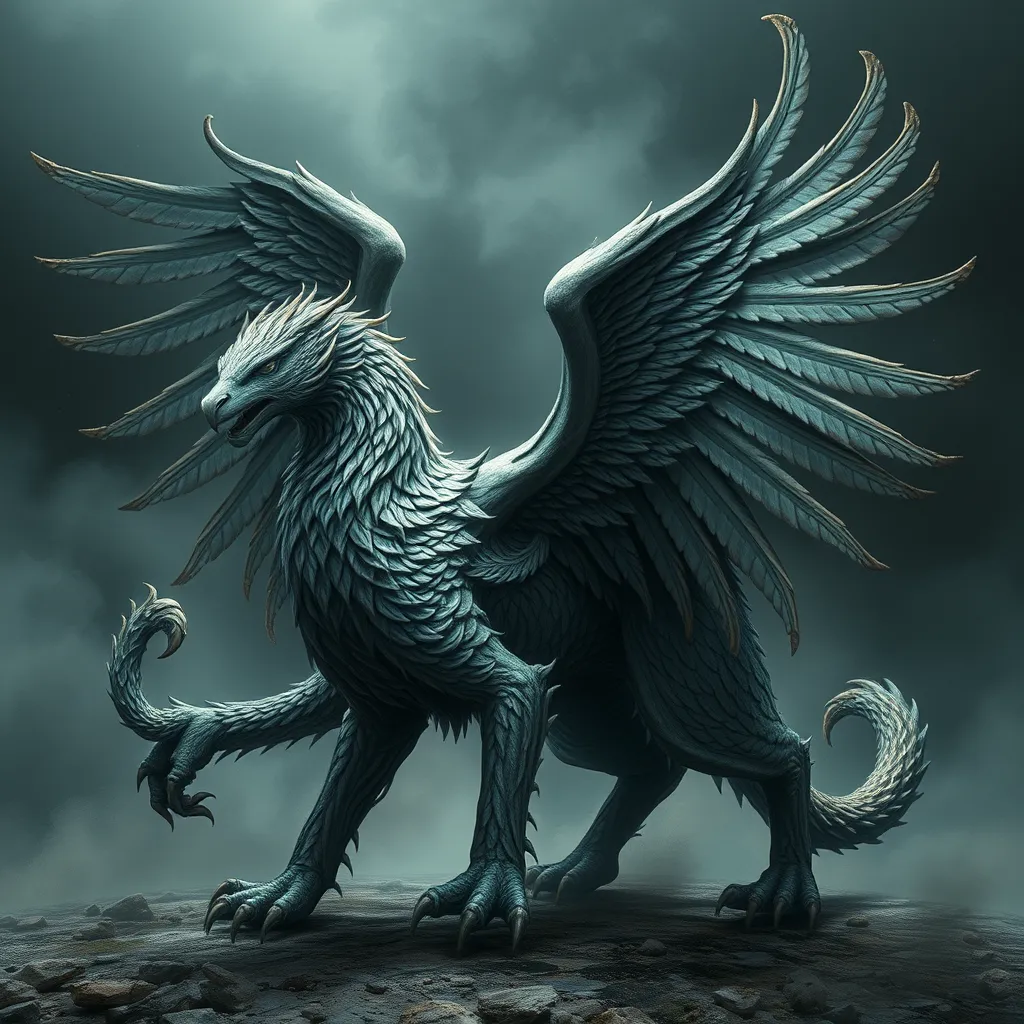The Griffin in Slavic Mythology: A Rare but Powerful Presence
I. Introduction
The Griffin, a creature that combines the majestic features of an eagle and the strength of a lion, has captured the imagination of many cultures throughout history. Often depicted as a guardian of treasures and a symbol of divine power, the Griffin holds a unique place in mythologies around the world. In this article, we will delve into the Griffin’s role within Slavic mythology, exploring its significance and representation in this rich cultural tradition.
II. Historical Context of the Griffin
The origins of the Griffin can be traced back to ancient civilizations, particularly in the Near East and Mediterranean regions, where it was revered as a powerful creature. The earliest depictions of Griffins can be found in artifacts from the ancient Sumerians and Egyptians, where they were often associated with the sun and protection.
Over time, the image of the Griffin evolved, adapting to the cultural contexts of various societies. By the time it reached Slavic folklore, the Griffin had transformed into a creature that not only represented power but also served as a bridge between the earthly and the divine.
In Slavic traditions, the introduction of the Griffin is believed to have occurred through cultural exchanges with neighboring civilizations, particularly during the period of the Great Moravian Empire. As the Slavs interacted with the Byzantines and other cultures, they assimilated various mythological creatures, including the Griffin, into their own folklore.
III. The Symbolism of the Griffin
The Griffin’s dual nature—part lion, part eagle—embodies various symbolic meanings. Here are some key aspects of its symbolism:
- Strength: The lion represents physical power and courage, while the eagle symbolizes spiritual elevation and keen insight.
- Wisdom: The combination of these two powerful animals signifies a union of intellect and strength, making the Griffin a symbol of wisdom.
- Guardianship: In many cultures, including Slavic, the Griffin is seen as a protector of sacred spaces, treasures, and divine secrets.
In Slavic culture, the Griffin emerged as a powerful symbol, embodying the ideals of honor, bravery, and the protection of the homeland. Its presence in folklore often signifies the importance of these values in the Slavic identity.
IV. Griffin Myths and Legends in Slavic Traditions
Throughout Slavic mythology, there are several notable tales that feature the Griffin, each illustrating its significance in moral and ethical lessons. Some of these stories include:
- The Griffin and the Hero: In various tales, the Griffin aids a hero in their quest, often providing guidance and protection against formidable foes.
- The Guardian of the Treasure: Many legends describe the Griffin as the guardian of hidden treasures, symbolizing the idea that great rewards come with great challenges.
- Lessons of Courage: In some stories, characters must confront the Griffin to prove their worth, teaching lessons about bravery and determination.
Variations of Griffin stories can be found across different Slavic regions, reflecting local traditions and cultural nuances. These tales often serve as allegories for personal growth, heroism, and the importance of community values.
V. The Griffin in Slavic Art and Literature
The Griffin has been a popular subject in traditional Slavic art, often depicted in sculptures, tapestries, and paintings. Artists have portrayed the creature in various forms, showcasing its majestic wings and fierce demeanor.
In Slavic literature, references to the Griffin appear in ancient texts and folk tales, where it symbolizes the ideals of strength and protection. For instance, epic poems and folklore often feature the Griffin as a character that embodies the spirit of the land and its people.
In contemporary Slavic artistic expressions, the Griffin continues to inspire artists and writers, who reinterpret its symbolism for modern audiences. This revival highlights the Griffin’s enduring relevance in the cultural landscape.
VI. Comparisons with Griffins in Other Mythologies
When comparing the Slavic Griffin with those from other cultures, several similarities and differences become apparent:
- Similarities: Across various mythologies, Griffins often share characteristics such as guardianship, strength, and wisdom, portraying them as protectors of sacred knowledge or treasures.
- Differences: In some cultures, Griffins may have a more aggressive connotation, while in Slavic traditions, they are often depicted as noble protectors.
- Cultural Exchange: The portrayal of the Griffin has been influenced by cultural exchanges throughout history, leading to diverse interpretations across different societies.
VII. Modern Interpretations and Relevance
Today, the Griffin remains a popular figure in popular culture, appearing in various forms of media such as films, literature, and video games. Its majestic and powerful image resonates with audiences, symbolizing strength and courage.
There has been a revival of interest in Slavic mythology and its creatures in recent years, with more individuals exploring the rich tapestry of stories and symbols that define Slavic heritage. This resurgence has brought new attention to the Griffin as a symbol of modern Slavic identity, reflecting the enduring legacy of these mythological creatures.
VIII. Conclusion
In conclusion, the Griffin holds significant importance in Slavic mythology, representing a powerful blend of strength, wisdom, and guardianship. Its presence in folklore, art, and modern interpretations highlights its enduring legacy and relevance in contemporary culture. As we continue to explore the rich narratives of Slavic mythology, the Griffin remains a captivating symbol that invites further investigation and appreciation of its mythical roots.
